All information about safaris in Tanzania, the national parks and destinations, tour packages, things to do, and frequently asked questions.
Why Visit Tanzania?
From adventurous safaris to tropical beaches, Tanzania offers unparalleled diversity. Discover top reasons to visit this magical East African country:
Wildlife Safaris – Teeming savannas and conservation areas protect the planet’s densest wildlife populations. Watch great migration river crossings, see the Big Five, view rare species. Tanzania’s a wildlife wonderland!
African Landscapes – Kilimanjaro’s snowy peak, Ngorongoro Crater’s lush rim, Serengeti’s endless plains – Tanzania boasts quintessential African scenery and geology awaiting exploration.
Indian Ocean – Relax on powdery white sand beaches and dive vibrant coral reefs after safari adventures. Zanzibar, Mafia, Pangani offer island bliss.
Cultural Experience – Ancient tribes, vibrant art, exotic cuisine reflect Tanzania’s heritage. Learn traditional practices like Maasai beadwork, sample flavorful dishes, appreciate music and dance.
Adventure – Summit Mount Kilimanjaro, observe chimpanzees, ride in hot air balloons, drive 4x4s through untamed wilderness. Tanzania thrills seekers!
With plentiful wildlife, diverse ecosystems, welcoming culture and unforgettable adventures, it’s easy to see why Tanzania’s a top dream destination for many African safari tourists.
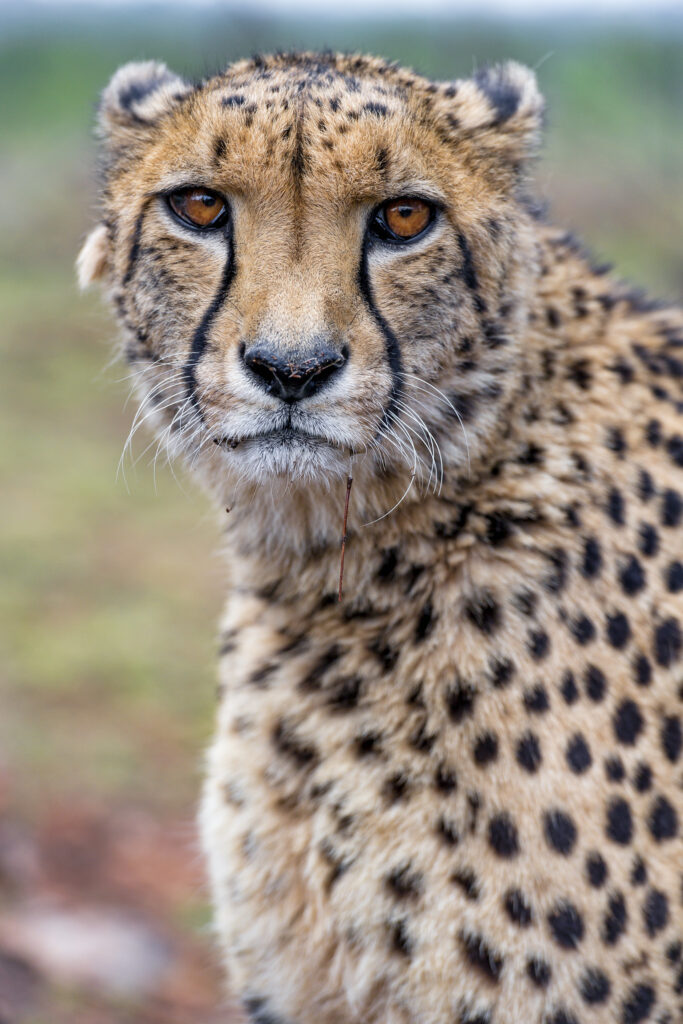
Tanzania Safari Activities
Tanzania Migration Safaris
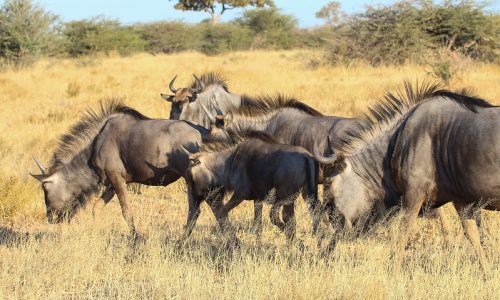
The Great Migration is the most amazing wildlife sight in Africa. Each year, millions of wildebeest and zebras move across Serengeti and Masai Mara chasing rains and grazing. Seeing their long columns and river crossings is unforgettable!
Migration constantly on the move following seasonal rains. In February calving season starts on southern Serengeti plains. Hundreds of thousands of newborns join the herds.
From May the herds go northwest to Grumeti and Mara rivers. Deep river crossings start in late July. Columns approach rivers where crocodiles wait! Dramatic as wildebeest jump in frantically and swim across. Many meet tragic end in the jaws of crocs.
August the migration reaches Kenya. Huge herds descend on Maasai Mara plains. More epic river crossings at Mara River with stampedes and massive splashing. Peak action!
November rains make herds start moving south to Serengeti again to calve. Cycle continues year after year in an endless loop.
Tanzania Big Five Safaris

Seeing Africa’s most iconic wildlife known as the Big Five is a top goal for many travelers in Tanzania. The Big Five consist of the lion, leopard, rhinoceros, elephant, and cape buffalo.
The best spots for checking off all five on your safari are Ngorongoro Crater and Serengeti National Park, as well as Tarangire National Park and Ruaha National Park. Ngorongoro Crater is probably the easiest place to see them all in a single day due to the high density of wildlife contained in the caldera.
Elephants and large herds of cape buffalo are quite plentiful and spotted reliably in most parks, but rhinos are endangered so a rhino sighting is a rare prize. Only about 25 black rhinos remain in Ngorongoro Crater along with approximately 100 in remote Mkomazi National Park. Leopards are notoriously elusive, but Serengeti’s central Seronera area near rocky outcrops and kopjes offers great chances to spot these big cats.. Spotting all of the Big Five is a celebrated safari achievement and iconic African memory!
Tanzania Luxury Safaris
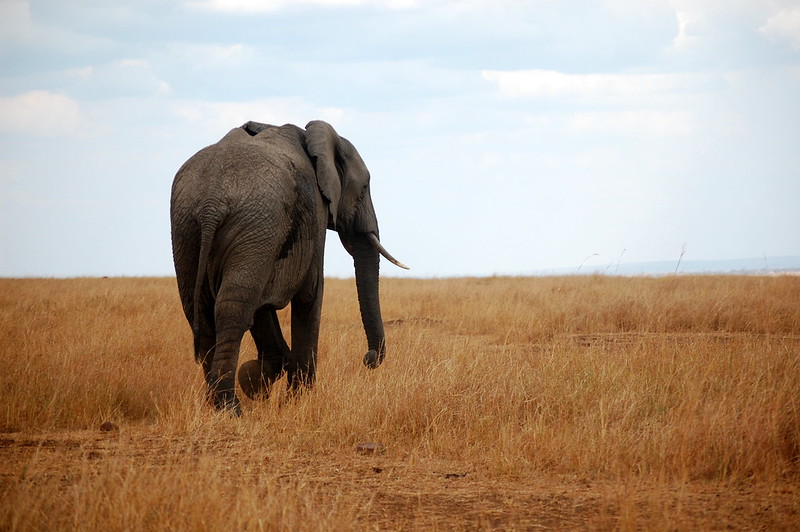
Luxury safaris let you see Tanzania’s incredible wildlife while relaxing in style. Stay at lux lodges with five star service in national parks and reserves. No roughing it needed!
Wake up in a big comfortable bed with morning coffee brought to the tent. Take a sunrise game drive in an open-top vehicle to look for animals. Return by lunch to eat gourmet food on the lodge viewing deck. Spend an afternoon at a spa or pool. Do a sunset drive with cocktails. Then candlelit dinner under the stars.
Luxury lodges have all the amenities. Big plush beds with fine linens. Indoor and outdoor showers. Private plunge pools and decks. Lounges with fireplaces and bars. Spas for massages. Gyms and yoga classes too.
Lodges have amazing locations to see wildlife. Stay right in the parks and reserves where animals are. Wake to the sound of lions roaring or elephants at a waterhole. See herd of buffalo or zebra out the tent window. Have sundowner drinks watching hippos.
All meals included at lodges with fantastic chefs. Boma dinner barbecues under the stars fun! Local guides lead game drives since they know the park and animals well. Learn about wildlife and nature from real experts.
Other activities like walking safaris, balloon rides, cultural visits arranged by lodge. Never a dull moment on luxury safari!
Tanzania Camping Safaris

Camping safari is a fun budget way to see Tanzania’s parks and wildlife. Tanzania has public campsites in places like Serengeti National Park, Ngorongoro Conservation Area, and Tarangire National Park. Visitors must bring their own camping gear and food.
Camping lets you wake up right in nature. Hear animal noises and birdsong as you make coffee at your site. Then go for an early morning game drive to look for animals before returning to camp for breakfast. Spend the middle of the day relaxing at camp. Take walking safari or do camp chores. Late afternoon go on another drive til dark before returning to cook dinner over a campfire under the stars.
Camping safaris let you choose a schedule instead of lodges. With tents, no need to arrive before dark. Camp staff provide security guards all night so it is safe. Public sites have bathrooms and showers, although basic. Some private campsites are more comfortable with better facilities.
Camping an affordable way to stay inside parks for a longer time. No need to pay high lodging rates. Costs just a small campsite fee plus park entry fees. But I must buy and haul all the gear, food and supplies for my own vehicle. Pack supplies in waterproof bags to keep dry.
For gear, need a sturdy tent, sleeping bags and mats, camp chairs, lantern, and clothing for hot and cold weather. Rent camping equipment from outfitters if needed. Prepare food that won’t spoil without a fridge. Canned goods and instant meals are good. Bring plenty of water.
Tanzania Budget Safaris

Tanzania ranks as a top bucket list safari destination, but can seem expensive, especially compared to other African countries. However, seeing wildebeest stampedes, lions on the prowl, and Mount Kilimanjaro on the horizon is possible even on a limited budget. With strategic planning, you can experience Tanzania’s wildlife wonders without breaking the bank.
First, visit during the low or shoulder seasons, typically from March to May and November to December. Park fees don’t change, but accommodation rates drop significantly. You’ll get the same wildlife sightings at a fraction of the cost. November still offers wildebeest migration action as herds move south through the Serengeti. April’s rains bring lush green scenery and newborn animals.
Joining a scheduled group tour or safari helps amortize costs across the whole group. You won’t have a private vehicle or guide, but activity expenses get shared. Look for tours sticking to budget accommodation and transport options.
Self-drive safaris are another cost-effective choice, although renting a proper 4×4 vehicle still runs $100-200 per day. Driving yourself allows sticking to your own schedule rather than rushed group game drives. Team up with other travelers to split vehicle costs. Time it right to buy discounted rental rates.
While saving money on lodging, dining and transport, don’t skimp on park entry fees or safari game drives. These expenses make up the essence of the Tanzania wildlife experience. Focus budget on maximizing time in the parks and reserves to see the migrated herds, big cats and diverse ecosystems up close.
Tanzania Balloon Safaris
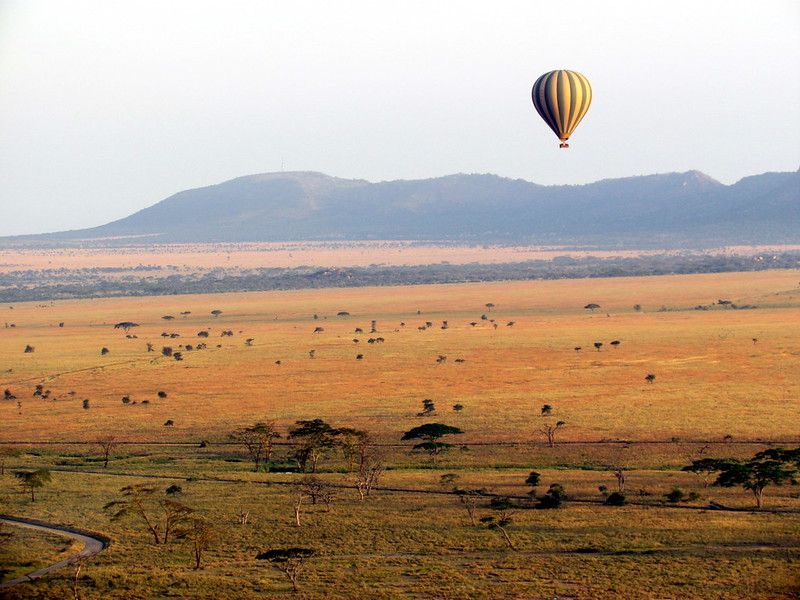
Floating over the epic Serengeti plains in a hot air balloon is a magical Tanzania safari experience. Balloons gently carry small groups of around 16 passengers silently above the wildlife starting at dawn when winds are calmest. Watch the glowing sunrise over the plains as the mist slowly rises and herds start stirring below. Gaze down at massive congregations of 1.5 million wildebeest along with 700,000 zebra and 200,000 Thompson’s gazelle that comprise the Great Migration. Spot elephant families of up to 30 members lumbering across the grasslands. See pride of lions awakening for the morning hunt.
Hippos meander back to watering holes. Hyenas lope home after a night of hunting. Experience wildlife from a unique perspective compared to drives on the ground. Flights last 1-2 hours floating with the winds, followed by a champagne bush breakfast in the wilderness. While Serengeti is the most popular launch site, Lake Manyara National Park is also great for ballooning over flamingo flocks on the soda lake.
Other parks allow ballooning but the main launch sites are in central Serengeti near Seronera. Licensed pilots required since winds can be unpredictable when flying low over wildlife. Book well in advance since balloon safaris are a popular bucket list activity. Costs average $550 per person but it’s worth every penny. Tanzania balloon safaris give you a breathtaking new perspective on the country’s epic landscapes and high densities of iconic wildlife!
Tanzania Walking Safaris

Imagine awakening at dawn to African bush’s sounds coming alive. Light mist hangs in the air as the guide briefs you for the adventure ahead. Strapping on boots, you set out on foot into untamed wilderness. This exhilarating experience awaits on Tanzania’s spectacular national parks’ walking safari.
Venturing by foot allows engaging wildlife and nature more intimately than a vehicle. In Serengeti National Park, guides lead morning treks near lodges when animals are most active. Spy zebra, wildebeest, gazelle nearby before returning for breakfast. What a rush!
Ngorongoro Conservation Area’s forests and crater rim also allow guided walking tours. Anticipate glimpsing buffalo, elephants, smaller critters along trails. Descending the crater floor remains prohibited, however.
Tarangire National Park contains excellent walking safari areas too. Although walks focus on scenery and birding, zebra or giraffe sightings occur. Armed rangers escort all walks for safety.
Around Katavi National Park, walks bring thrilling hippo and crocodile close encounters near lakeshores. Guides select safe areas for approaching giants, provide safety briefings. Talk adrenaline rush!
Tanzania Photo Safari

Tanzania has epic scenery and many wildlife. This makes Tanzania a photographer’s paradise. Many chances exist to take photos of iconic African views and animals. Tanzania’s national parks give front row seats to wildlife action and inspiration around every corner.
The big open Serengeti plains with acacia trees give a classic African look. Take photos of wildebeest and zebra migrations, lion families, and lone giraffes against colorful sunrises and sunsets. Also iconic, Ngorongoro Crater rim overlooks crowds of animals on the crater floor. Go down to eye level with elephants, rhinos, and big cats in this wildlife Eden.
Lakes like Lake Manyara dotted with flamingos and Tarangire’s rivers crowded with elephants and other plant eaters make nice backgrounds for landscape shots. Ruaha’s plains with baobab trees dotted with hunters capture Tanzania’s wild spirit. Rubondo Island’s thick forests shelter chimps and other primates for close-up wildlife pics.
Specialized photo safaris maximize shooting time in best lighting. Photographers benefit from private vehicles that go where asked and stop when needed. Guides good at positioning for best angles and lighting help get top-tier shots. Multiple cameras ready with different lenses prevents missing moments changing equipment.
Birding in Tanzania
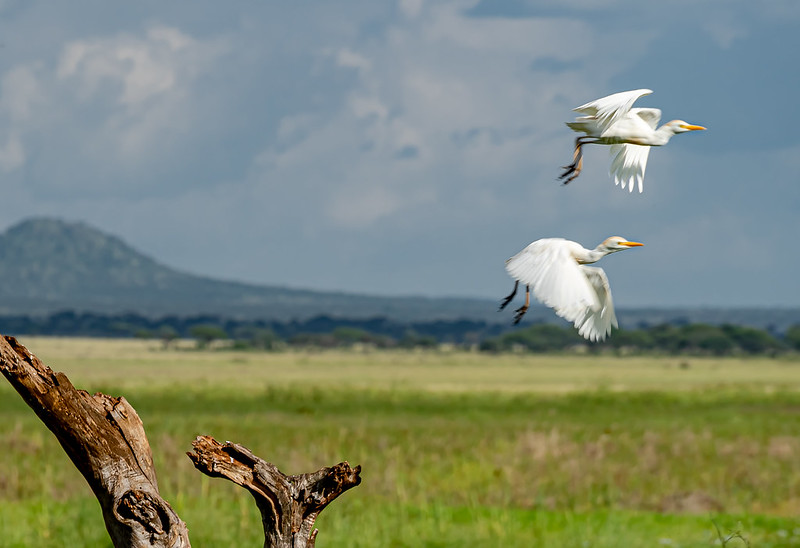
Boasting over 1,100 bird species, Tanzania proves a birdwatcher’s paradise. Numerous national parks and reserves provide prime habitat, making Tanzania a must-visit birding destination.
The expansive Serengeti National Park harbors over 500 bird species. Secretary birds, kori bustards and crowned cranes roam the plains while migratory species visit November through April.
Ngorongoro Conservation Area also excels for birding safaris. Flamingos amass on Lake Magadi while raptors like augur buzzards and martial eagles soar overhead. Highland forests host mountain specialists like barred warblers.
Tarangire National Park holds over 550 bird species. The dry season brings large migratory bird flocks. Yellow-collared lovebirds, ashy starlings and red-necked falcons frequent the park. Pelicans and storks gather along the Tarangire River.
Renowned for waterbirds, Lake Manyara National Park sees thousands of pink flamingos congregate on its soda lake annually. Pelicans, storks and cormorants also thrive while forest habitats harbor lovebirds and silvery-cheeked hornbills.
With over 571 species recorded, Ruaha National Park is a birding jackpot. The Ruaha River area attracts brightly colored kingfishers, bee-eaters and rollers. Ruaha provides rare finds like lesser kestrels and Basra reed warblers, best seen during the dry season.
On idyllic Rubondo Island, over 400 species find refuge including kingfishers, fish eagles, palm nut vultures and the vibrant Schalow’s turaco.
Tanzania Family Safaris

Tanzania is fun for the whole family to experience together on a safari adventure. Kids will love seeing majestic wild animals like lions, elephants, giraffes, zebras and more up close in the famous national parks like Serengeti and Ngorongoro Crater.
Many lodges and camps offer family suites or adjoining rooms so parents can have some privacy while kids are safely nearby. Child-friendly food menus and mealtimes make dining hassle-free. Pools and play areas at lodges let kids have fun and relax safely in-between game drives.
Experienced guides adjust game drive routes and durations based on kids’ needs, with stops to stretch legs and shorter drive times before little ones get restless. Most safari vehicles seat 7 passengers so plenty of room to fit the family. The parks also give big discounts on entry fees for children under 18.
Consider topping off the family safari with a magical balloon ride over the Serengeti plains for an unforgettable shared experience. Round it off with beach time on Zanzibar for the ultimate family vacation.
Tanzania Honeymoon Safaris
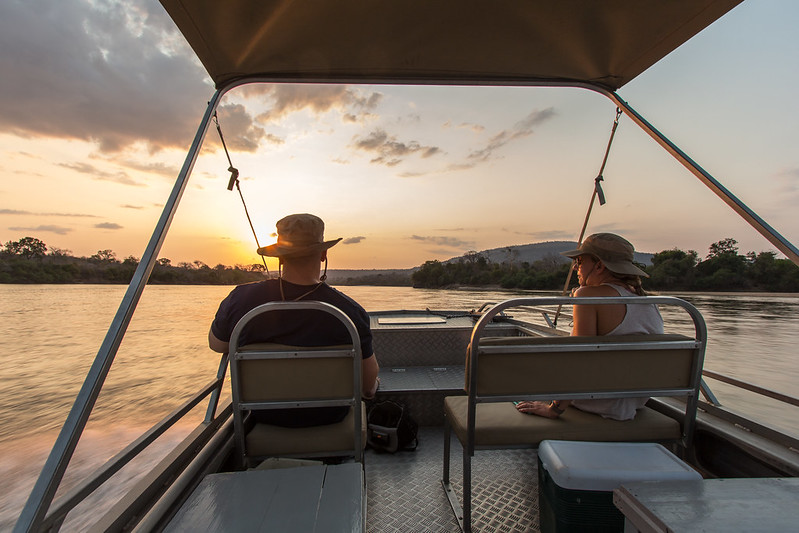
Tanzania is the ultimate dream honeymoon destination for adventure-loving couples. Intimate private luxury lodges and tented camps set the perfect romantic mood, with candlelit dinners under the stars after an exciting day out wildlife viewing.
Newlyweds can lounge in plunge pools, get relaxing couples massages at camp spas, and enjoy large lavish beds with fine linens. Attentive staff provide top-notch service including special private dinners and honeymoon amenity packages tailored by the lodges.
Adventure together on walking safaris to see big game up close and personal. Visit remote private concessions in the Serengeti like Grumeti or Lobo for exclusive wildlife sightings away from crowds.
Cap off the honeymoon adventure by jetting to the tropical island of Zanzibar or off-the-beaten-path Mafia Island.
Tanzania offers luxury and adventure with endless chances to create romantic shared memories that will last a lifetime.
Tanzania Cultural Safaris

Authentic cultural experiences are a highlight of any Tanzania safari. Visitors are welcome to immerse in vibrant customs through activities like village tours, school visits, meals, artisan shopping, and more.
Most popular is visiting the Maasai near Ngorongoro Conservation Area. Well-established villages receive tourists respectfully. Watch traditional song and dance, join beadwork lessons, and purchase handicrafts. Learn about Maasai lifestyle, beliefs, history from locals. Multi-day cultural experiences like hiking with Maasai warriors or overnight village stays are also arranged.
On Zanzibar, tour historic Stone Town to see Arab, Indian, European influences in architecture, markets, cuisine. Shop lively bazaars for spices, fabrics and antiques.
Small group tours in northern Tanzania like Marangu let travelers form connections through activities like cooking classes, farm tours, community service. Cultural tourism helps provide income and destigmatize tourism.
Research operators carefully to find responsible cultural visits, not exploitative staged shows. Seek interactive exchanges, not just observation. Ask lots of questions to show interest in Tanzanian people and ways of life. Keep an open mind to expand your perspective through cultural encounters.
Fly in Safari Tanzania

Most popular fly-in destinations include Serengeti, Ruaha National Park, and Selous Game Reserve. Flying a small plane or helicopter over the sprawling Serengeti offers a unique vantage point over plains. Witness migratory wildebeest and zebra traversing landscape and spot iconic wildlife roaming below. Most flights touch down near remote airstrips where luxury mobile camps await amidst wildlife.
Tanzania’s largest at 20,226 square kilometers, Ruaha National Park best appreciated from air. Ruaha hosts over 10% of the endangered wild dog population and impressive densities of elephant, kudu, sable, roan, eland and 400+ bird species. Fly-in safari gets you swiftly to this remote region.
At 50,000 square kilometers, Selous Game Reserve is Africa’s largest, and fly-in safari opens opportunities to explore farthest corners teeming with wildlife along Rufiji River. Reserve protects over 2,000 elephants along with buffalo, hippos, crocodiles, antelope and some of Tanzania’s last black rhino.
Fly-in safaris average $1,500-$2,500 per person for flights and all-inclusive ground arrangements. Aerial perspectives combined with luxurious, exclusive wildlife encounters on ground make fly-in safaris an indulgent must-do for adventurous travelers. Tanzania by air unveils true wilderness grandeur.
Self Drive Safari in Tanzania

Self-driving through Tanzania’s spectacular national parks allows you to set your own safari schedule and freely explore the wildlife areas.
It requires renting a well-equipped 4×4 vehicle in a hub like Arusha, then stocking up on all the necessary supplies to be fully self-sufficient. You can pick campsites within the parks to stay immersed in nature and sounds of the wildlife, or opt for budget-friendly lodges just outside the park gates. Stock up on groceries to make your own meals or experience local cuisine. Build your own personalized safari itinerary going exactly where you want whenever you desire, stopping for every wildlife sighting without a guide rushing you along.
While self-driving safaris offer great freedom, they also require more preparation hauling your own gear and supplies. Make sure to prep the vehicle for rugged backcountry terrain, and carry tools for potential breakdowns. Bring spare tires, fuel cans, and recovery equipment.
Use detailed paper maps since GPS is unreliable in remote areas. Carefully plan each day’s route and notify lodges if arriving after dark. Self-driving Tanzania’s parks takes effort but provides an exhilarating adventure exploring the wildlife and landscapes entirely on your own terms.
Tanzania Safari Activities With Cost
| Activity | Cost (USD) | Where to See | Best Time to See | Animals to See | Parks |
|---|---|---|---|---|---|
| Tanzania Wildlife Safaris | $200-500 per person per day | Serengeti NP, Ngorongoro Crater, Tarangire NP, Lake Manyara NP, Ruaha NP | Year-round, best during Great Migration from May-July | Lions, leopards, elephants, rhinos, buffaloes, wildebeest, zebras, giraffes, antelope, hippos, flamingos | Serengeti NP, Ngorongoro Crater, Tarangire NP, Lake Manyara NP, Ruaha NP |
| Birdwatching Safaris in Tanzania | $400-600 per person per day | Lake Manyara NP, Tarangire NP, Ruaha NP, Rubondo Island | November-April during migration season | Flamingos, pelicans, storks, eagles, falcons, starlings, hornbills, kingfishers, bee-eaters | Lake Manyara NP, Tarangire NP, Ruaha NP, Rubondo Island |
| Tanzania Walking Safaris | $40-160 per person per day | Serengeti NP, Ngorongoro Crater, Tarangire NP, Katavi NP | Year-round | Elephants, buffalo, giraffe, zebra, hippos, crocodiles, small antelopes | Serengeti NP, Ngorongoro Crater, Tarangire NP, Katavi NP |
| Hot Air Balloon Safaris Tanzania | $550+ per person | Serengeti NP, Lake Manyara NP | Year-round | Wildebeest, zebras, elephants, giraffes, hippos, predators | Serengeti NP, Lake Manyara NP |
| Canoeing/Boating | $40-60 per person per day | Rubondo Island NP, Lake Manyara NP | Year-round | Hippos, crocodiles, elephants, birds like fish eagles | Rubondo Island NP, Lake Manyara NP |
| Cultural Tours Tanzania | $40-350 per person per day | Maasai villages, Iraqw, Datoga, Sukuma tribes | Year-round | Maasai warriors, tribal customs and dances | Ngorongoro Crater, Serengeti NP, Lake Eyasi |
| Horseback Safaris | $4000+ per person per day | Lake Mburo NP, Masai Mara NR | Year-round | Zebras, wildebeest, gazelles, giraffes | Lake Mburo NP, Masai Mara NR |
| Mountain Climbing | $750+ per person | Mt. Kilimanjaro, Mt. Meru | January-February and August-September | Towering views from summit | Kilimanjaro NP, Arusha NP |
| Chimpanzee Trekking Tanzania | $1000+ per person per day | Mahale Mountains NP, Gombe Stream NP | Year-round | Chimpanzees | Mahale Mountains NP, Gombe Stream NP |
| Diving/Snorkeling | $40+ per person per day | Zanzibar, Mafia Island | Year-round | Whale sharks, manta rays, coral reefs and tropical fish | Mnemba Island, Chumbe Island |
| Wildebeest Migration Safari Tanzania | $60+ per person per day | Serengeti NP, Masai Mara NR | May-July during migration | Wildebeest, zebras | Serengeti NP, Masai Mara NR |
| Night Game Drives Safaris Tanzania | $60+ per person per day | Serengeti NP, Ngorongoro Crater | Year-round | Lions, leopards, hyenas, genets, porcupines | Serengeti NP, Ngorongoro Crater |
| Photo Safaris Tanzania | $750-1250 per person per day | Serengeti NP, Ngorongoro Crater, Tarangire NP | Year-round, best light November-April | All animals | Serengeti NP, Ngorongoro Crater, Tarangire NP |
Tanzania National Parks & Safari Destinations
Ngorongoro Conservation Area
Ngorongoro Conservation Area in northern Tanzania world famous for massive crater teeming with wildlife. The collapsed volcanic caldera is 610 meters deep and 260 square kilometers wide. Herds of wildebeest, zebra, gazelle graze crater floor.
Resident population of around 25,000 large animals living in harmony. spot lions, elephants, hippos, buffalo, flamingos, and rare black rhinos. High density of predators includes many lion prides, cheetahs, and hyenas. One day in Ngorongoro Crater I often see Big Five. Spectacular views from the crater rim stop at a picnic site for lunch with panoramic views.
Also explore other parts of the conservation area like Olduvai Gorge archeological site and Laetoli footprints. Stay in luxury lodges perched on crater rim for amazing outlooks or budget lodges outside the park.

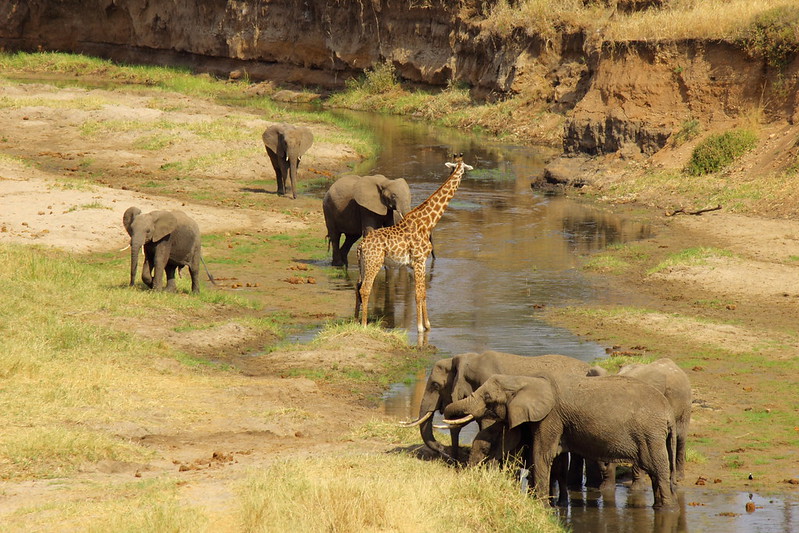
Tarangire National Park
In the dry season from June to October, Tarangire National Park is famous for dense concentrations of wildlife around Tarangire River. Herds of thousands of zebras, wildebeest, impala and elephants congregate looking for water. Huge number of baobab trees dot the landscape giving exotic look. 550 bird species recorded.
Best game viewing along the river and in Silale Swamps. See families of rare gerenuk antelope in drier areas. Watch big herds of elephants in wetlands. Iconic Tarangire known for ancient giant baobab trees, birdlife and dry season river herds.
Avoid rains in November to March when animals disperse. Budget accommodation in the park plus luxury lodges outside in the wildlife corridor. Easy day trip from Arusha or Lake Manyara. Aim for early morning start to see active wildlife at prime time. Tarangire is a wildlife haven not to miss!
Ruaha National Park
Sprawling through central Tanzania, Ruaha National Park covers an area over 20,000 square kilometers making it the largest national park. Despite size, it feels untouched and uncrowded wilderness. Home to about 10% of the world’s remaining lions and largest elephant population.
Also cheetahs, leopards, endangered wild dogs, 300+ bird species. Flowing through Ruaha National Park, Great Ruaha River provides a lifeline for wildlife in the dry season. Massive baobab trees dot the landscape. Visit during June to November dry season when wildlife clusters on riverbanks.
Camp under the stars or stay at exclusive little camps and lodges. Sensational walking safaris available. Long drives between sights but the isolation part of Ruaha’s magic.

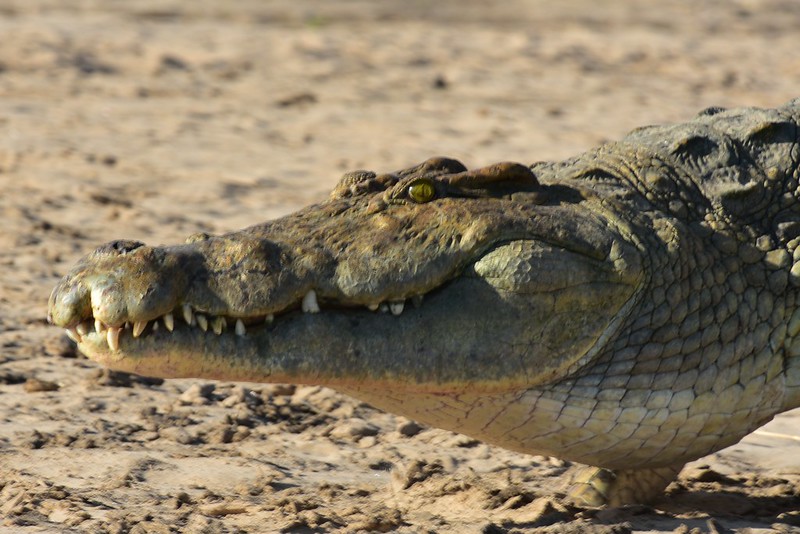
Nyerere National Park
Remote Nyerere National Park in northern Tanzania one of the country’s newer parks gazetted in 2019. Made up of former Selous Game Reserve wilderness, covers an area over 3,000 square kilometers.
Named after Julius Nyerere, Tanzania’s first president and conservation proponent. Home to a range of wildlife like elephants, hippos, giraffes, zebras, antelopes and African wild dogs. Lions and hyenas also prowl the area. Birdlife includes fish eagles, kingfishers, storks and magnificent birds of prey.
Rufiji River flows through providing essential water source during the dry season. Accessible by boat or plane, not car. Stay at the only lodge in park, the luxurious Rufiji River Camp. Walking safaris and boat excursions are popular activities. Remote and pristine wilderness perfect for adventurers seeking untouched safari experience.
Lake Manyara National Park
Though small at only 330 square kilometers, Lake Manyara National Park packs lots of diversity into the area. Centerpiece is shallow alkaline Lake Manyara, famous for huge flocks of flamingos that migrate here. Forested areas with hot springs host monkeys, baboons, giraffes and elephants. Plains have buffalo, hippos, zebras and 400 bird species. Unique sight is tree climbing lions lazing in acacia branches.
Best spot hippos is a lovely picnic site on the lakeshore with eye-level views. Walking safaris are available but always with armed rangers. Go early morning or late afternoon on game drives when animals are active. Stay at nice lodges outside the gate since there is no lodging in the park. Easy drive from the safari hub of Arusha. Go for a day trip or as the first stop on the northern circuit. Lake Manyara is a scenic and lush park bursting with birdlife.


Serengeti National Park
World famous Serengeti National Park in northern Tanzania best known for Great Migration when millions of wildebeest, zebras and gazelles roam endless plains.
Around 1.5 million wildebeest and 260,000 zebra move in a clockwise pattern each year seeking fresh grazing and water. From July to October mating then migration rivers crossings provide wildlife spectacle drawing safari goers from everywhere. Even without migration, wildlife diversity staggering – over 70 large mammal and 500 bird species. See Topis, elands, hyenas, hippos plus big cats like lions, leopards and cheetahs.
Landscape ranges from open grass savannah, acacia woodlands, granite kopjes to riverine forest and swamps. Stay at excellent camps and lodges throughout the park. Can do an iconic balloon ride over migration here.
Mount Kilimanjaro National Park
Home to Africa’s tallest mountain, Mount Kilimanjaro National Park protects iconic snowcapped Mount Kilimanjaro rising 5,895 meters. Millions of years old extinct volcanic peak has three main volcanic cones – Kibo, Mawenzi, Shira. Summit bears a glacier giving Kilimanjaro a unique snowy silhouette visible from 100 kilometers away.
Climbing to Uhuru Peak, one of the world’s most famous treks taking 5-7 days. Altitude and weather are big challenges. No technical climbing skills needed, just fitness and determination. Sleep in mountain huts during a multi-day trek. Non-climbers enjoy views from foothills walking through lush rainforests seeing elephants, buffalos, monkeys and hundreds of bird species.
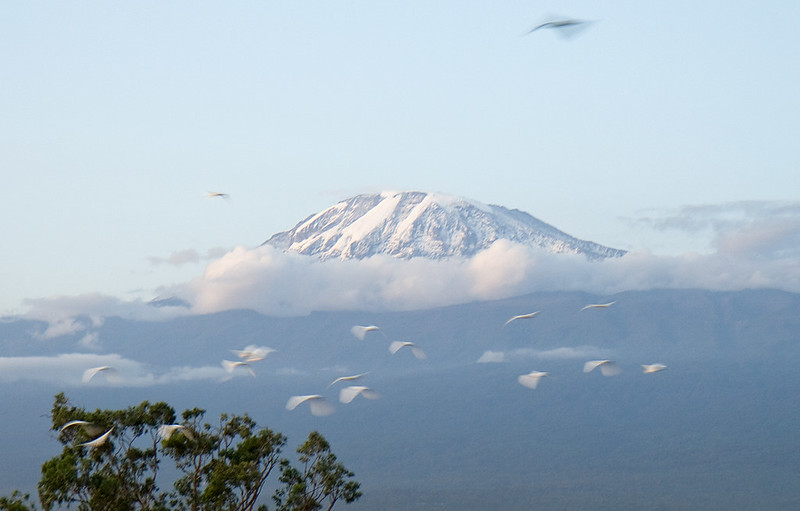
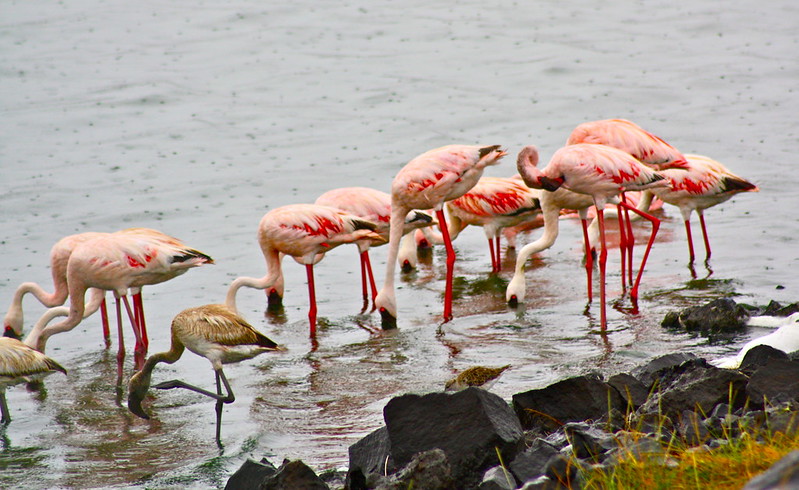
Arusha National Park
Small but scenic Arusha National Park sits between Kilimanjaro and Arusha city. Characterized by diverse landscapes from grassy savannah to forests fed by Momella Lakes. Wildlife includes giraffes, buffaloes, zebras, warthogs, flamingos and over 400 bird species.
Climb Mount Meru, fourth highest peak in Africa for sweeping views. See herds of elephants and dark-coated Colobus monkeys in Ngurdoto Crater. Popular activities are walking safaris, birdwatching trips, Ngurdoto Crater rim hike and Mount Meru climbs. Unique park accessible as a day trip from Arusha.
Watch the sunset over Mount Kilimanjaro for a magical sight. More low key than Serengeti but just as rewarding wildlife experience without crowds.
Detailed Table Of 22 Tanzania National Parks
| Park | Location | Activities | Animals to See | Best Month to Visit | Avg Temp (°C) | Where to Stay |
|---|---|---|---|---|---|---|
| Serengeti | Northern Tanzania | Game drives, balloon safaris, wildlife viewing | Lions, leopards, elephants, wildebeest, zebras | Dec-Feb (Great Migration) | 15-25 | Serengeti Sopa Lodge, Four Seasons Safari Lodge |
| Ngorongoro Crater | Northern Tanzania | Game drives, crater rim hikes | Lions, rhinos, elephants, hippos, flamingos | Year-round | 15-25 | Ngorongoro Crater Lodge, Lemala Ngorongoro Tented Camp |
| Tarangire | Northern Tanzania | Game drives, walking safaris, birdwatching | Elephants, zebras, wildebeest, lions, ostriches | Jun-Oct (dry season) | 15-30 | Tarangire Sopa Lodge, Sandeli Africa Safari Camp |
| Lake Manyara | Northern Tanzania | Game drives, birdwatching, canoeing | Elephants, hippos, tree-climbing lions, pink flamingos | Jun-Oct (dry season) | 20-30 | Lake Manyara Serena Safari Lodge, Manyara Wildlife Safari Camp |
| Arusha | Northern Tanzania | Cultural tours, hiking Mt. Meru | N/A | Year-round | 15-25 | Arusha Coffee Lodge, Legendary Lodge |
| Mount Kilimanjaro | Northern Tanzania | Hiking, climbing to summit | N/A | Jan-Feb, Sept-Oct | Varies | Machame Camp, Marangu Camp, Kibo Hut |
| Selous Game Reserve | Southern Tanzania | Boat safaris, game drives, walking safaris | Elephants, hippos, wild dogs, crocodiles | Jun-Oct (dry season) | 20-30 | Selous Serena Camp, Selous Impala Camp |
| Ruaha National Park | Central Tanzania | Game drives, walking safaris, cultural tours | Elephants, lions, kudu, impalas, wild dogs | Jun-Oct (dry season) | 20-30 | Ruaha River Lodge, Jongomero Camp |
| Mikumi National Park | Central Tanzania | Game drives | Elephants, giraffes, zebras, antelopes, lions | Year-round | 20-30 | Mikumi Wildlife Camp, Foxes African Safari Camp |
| Udzungwa Mountains | South-central Tanzania | Hiking, forest walks, waterfall swimming | Primates, forest birds | Jun-Nov (dry season) | 20-30 | Udzungwa Mountain View Hotel, Hondo Hondo Udzungwa Forest Camp |
| Mahale Mountains | Western Tanzania | Chimpanzee tracking, forest walks | Chimpanzees, red colobus monkeys, hippos | Jun-Oct (dry season) | 25-30 | Greystoke Mahale, Kungwe Beach Lodge |
| Gombe Stream | Western Tanzania | Chimpanzee tracking, forest walks | Chimpanzees, baboons, red-tailed monkeys | Jun-Oct (dry season) | 25-30 | Gombe Forest Lodge |
| Katavi National Park | Western Tanzania | Game drives, walking safaris, canoeing | Hippos, elephants, lions, buffaloes | Jul-Oct (dry season) | 20-30 | Katavi Wildlife Camp, Katuma Bush Lodge |
| Rubondo Island | Western Tanzania | Boat cruises, fishing, walking trails | Elephants, giraffes, hippos, crocodiles | Jun-Feb (dry season) | 25-30 | Rubondo Island Camp |
| Saadani National Park | Coastal Tanzania | Game drives, boat safaris, beach relaxation | Elephants, giraffes, lions, hippos, crocodiles | Jun-Feb (dry season) | 25-30 | Saadani Safari Lodge, Tented Camp |
| Mkomazi National Park | Northeastern Tanzania | Game drives, rhino tracking, hiking | Black rhinos, oryx, giraffes, elephants | Year-round | 20-30 | Ibamba Safari Camp, Kisima Ngeda Camp |
| Kilwa Masoko | Coastal Tanzania | Scuba diving, snorkeling, cultural tours | Whale sharks, manta rays, coral reefs | Year-round | 25-30 | Kilwa Seaview Resort, Mivumo River Lodge |
| Jozani Forest | Zanzibar | Red colobus monkey tracking, mangrove boardwalks | Red colobus monkeys, other primates | Year-round | 25-30 | Jozani Forest Camp, Coral Rock Hotel |
| Pemba Island | Zanzibar | Scuba diving, snorkeling, beach relaxation | Coral reefs, manta rays, sea turtles | Year-round | 25-30 | Fundu Lagoon Resort, Sharook Guesthouse |
| Stone Town | Zanzibar | Cultural tours, street markets, architecture | N/A | Year-round | 25-30 | Emerson Spice Hotel, Tembo House Hotel |
Tanzania Safari FAQs
How Much Does A Tanzania Safari Cost?
Tanzania Safari Costs
Budgeting and planning costs part of booking any Tanzania safari. Prices vary widely based on factors like type of accommodation, activities, parks visited, group size, and time of year. Basic options like camping safaris average $200-$300 per person daily while luxury lodges average $700-$1000+ daily. Mid-range lodges and tented camps fall around $350-$550 per day. These prices include park fees, game drives, meals, and guides. Budget extra for flights which run $100-$500+ between parks.
Beyond day rates, costs for safari packages range from a budget under $1500 total per person for 5-7 days up to $10,000+ per person for lavish high-end 2 week itineraries. Safaris averaging 10-14 days will generally total $3000-$5000 per person when including good lodges and activities. Remember peak season from June to October means highest rates.
Ways to save include avoiding peak months, camping instead of lodges, using budget accommodation outside parks, self-driving instead of guided, packing meals, and joining group tours. But don’t skimp too much on activities and park time to see wildlife. Find balance between saving money and having optimal experience.
Tanzania rewards travelers who strategically prioritize where to splurge versus save. Focus budget on maximizing time on game drives, visiting top parks and reserves, and quality accommodation for necessary comfort. Then scale back on things like internal flights, fancy restaurant meals, and expensive hotels in transit. This provides affordable African safari without sacrificing wildlife viewing and adventure. With planning, Tanzania is doable on most budgets.
When Is The Best Time To Visit Tanzania?
With diverse parks and climates, best time for Tanzania safaris depends on your priorities. June to October dry season is considered peak for clear skies, minimal rain, and easily spotted wildlife clustered near dwindling water sources. Annual wildebeest migration river crossings also occur July-August in Grumeti and Mara Rivers, a huge draw. But lodging rates highest and crowds are larger.
November to February wet season has afternoon rain showers, green landscapes and newborn animals. Migratory birds abound November-March. Though wildlife dispersed, still excellent viewing when sunshine emerges after rain. Far fewer tourists and discounted lodge rates.
March to May rainy season has heavy rains making wildlife viewing tougher and travel challenging. Parks are still accessible and lovely when rain pauses. Lowest lodging rates with few tourists.
September to October shoulder season has excellent weather, scenery and wildlife activity as the landscape dries out. Migration enters southern Serengeti. Affordable lodging before peak rates resume.
No definitive “best” time – each season has advantages. Prioritize weather, costs, crowds, wildlife goals when choosing travel months. Be flexible in wet season and research seasonal patterns to maximize sightings year-round.
What Are The Tanzania Visa Requirements?
Tanzania Visa Requirements
Most foreign nationals need tourist visas to enter Tanzania. Single-entry visas can be obtained upon arrival at airports and land borders for $50 USD paid in cash. Multiple entry visas must be obtained beforehand through the embassy. Allow 1-2 months for processing.
Passport must be valid for at least 6 months from date of entry with at least one blank page for visa. Carry photocopies of key pages in case lost.
No visa required for stays under 90 days for citizens of East African countries (Kenya, Uganda, Rwanda, Burundi, Democratic Republic of Congo), several Southern African nations, and some island nations like Mauritius. Check current rules.
Yellow fever vaccination certificate required by all travelers over 1 year old coming from or transiting countries with risk of yellow fever transmission per WHO. Get vaccination at least 10 days before travel. Carry certificate.
COVID-19 entry regulations change often. Currently, age 5+ must show proof of full vaccination. Unvaccinated need negative PCR test taken 72 hours pre-departure. Check Tanzania requirements before booking.
Visas cannot be obtained at land borders with Kenya, Uganda, Rwanda or Burundi. Obtain beforehand.
Validate yellow fever and visa documents before departing and carry hard copies. Double check latest visa rules and arrive prepared.
What to Pack For A Safari in Tanzania
Packing List for Tanzania Safaris
Packing for a Tanzania safari means preparing for adventure in remote wilderness. Focus on versatile layering for fluctuating temperatures and activities. Here’s a checklist of essentials:
– Neutral toned lightweight pants, shirts, socks for game drives
– Fleece jacket and sweatshirt for cool evenings
– Hat, sunglasses, sunscreen for sun protection
– Sturdy hiking shoes or boots for walking safaris
– Sandals for camp/lodge downtime
– Headlamp or flashlight for dimly lit camps
– Binoculars for wildlife viewing
– Camera with zoom lens and extra batteries
– Tanzania travel adapter to charge electronics
– Light rain jacket, especially if visiting November-May
– Mosquito repellent and medications like antimalarials
– Tanzanian Shilling cash for gratuities, souvenirs and any extra expenses
– Photocopies of passport, visas, travel insurance
– Prescription medications in original containers
– Toiletries and personal medications
– Antibacterial wipes or gel for on-the-go hand sanitizing
Pack casual versatile clothing you can layer, prioritize sun protection, and bring gear suited for rugged travel and wildlife viewing. Soft duffel bags are better than hard suitcases for frequent packing/unpacking. Keep important documents secure but accessible. Focus packing on comfort and preparedness.
What are the top parks and reserves to visit in Tanzania?
Top parks include Serengeti National Park, Ngorongoro Crater, Tarangire National Park, and Lake Manyara National Park in the north. In southern Tanzania, top reserves are Ruaha National Park and Selous Game Reserve
How long should I spend on safari in Tanzania?
Most visitors spend 5-7 days on safari as part of a 10-14 day Tanzania trip. This allows time to visit 2-4 parks at a relaxed pace. Add more days to visit additional parks or trek Kilimanjaro.
How should I get around in Tanzania?
Most visitors fly between parks and cities. Self-driving is popular but requires 4WD rental. Public buses are budget-friendly. Joining tours or hiring a driver simplifies logistics. Choose what suits your budget.


